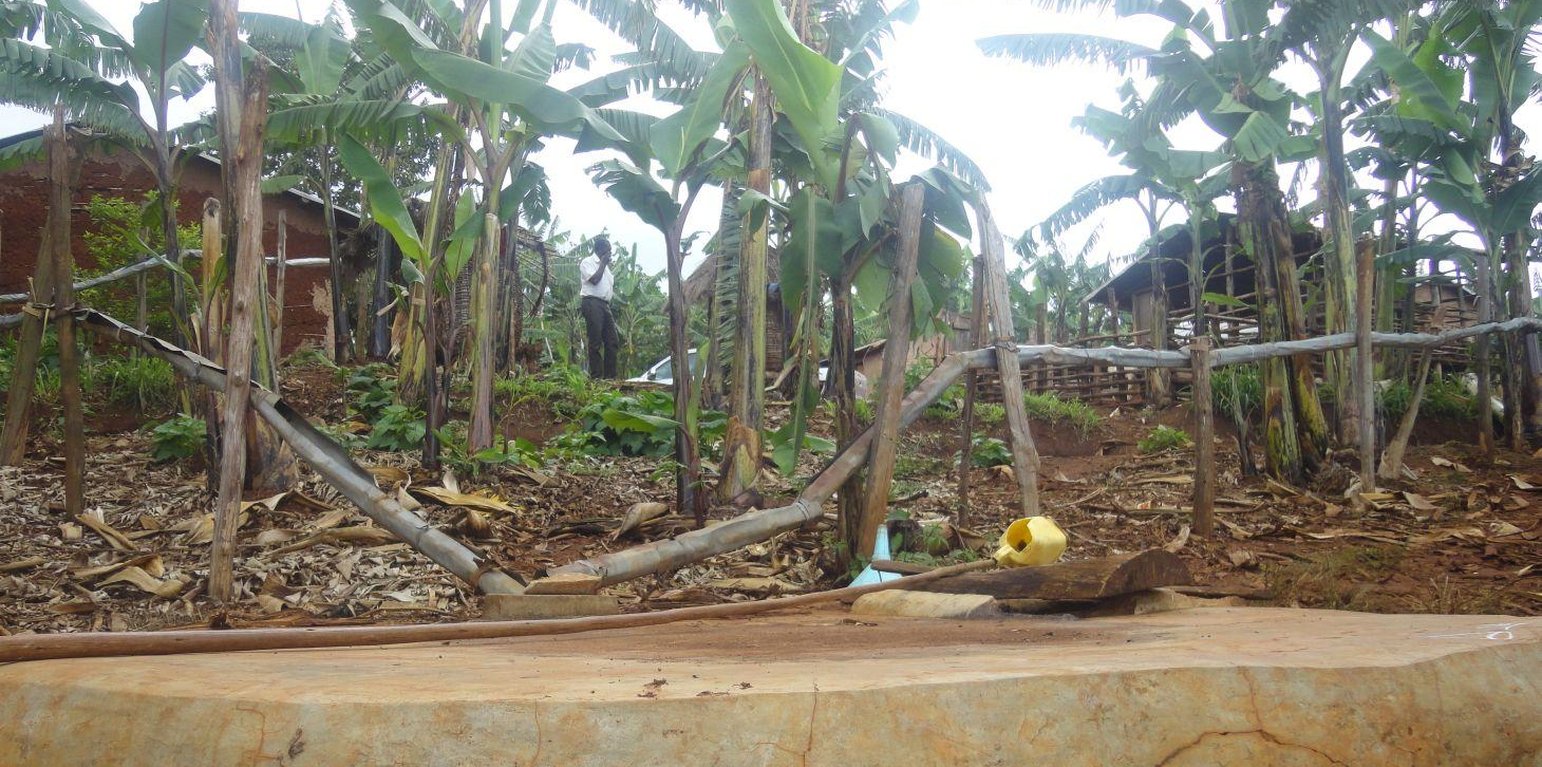



Despite high precipitation (>1200 mm), Rubagano still experiences water shortage. It is hilly, with steep (>30%) to very steep (>58%) slopes. Rain water runs off to the valleys below, causing erosion and damaging infrastructure such as roads along its course. There is little rain water infiltration and the ground water level low. The few boreholes that government constructed in the area are often dry. Therefore women and children normally walk distances of up to 4 km to fetch water which, in many cases, is actually runoff dammed behind a concrete wall built across an open rock patch. To alleviate water scarcity, farmers have been mobilized by Kagera TAMP project to harvest the rain water from their own roofs. Because water sources are far from most households, rooftop water harvesting has a very high utility for the farmers. Adoption is high.
Purpose of the Technology: The primary goal of the technology is to increase household water availability. It also reduces runoff, produces water for the tree nursery and backyard gardens..
Establishment / maintenance activities and inputs: Requirements for harvesting water on an iron roof are water collection gutters and an underground tank. Rain falling on the roof flows into collection gutters constructed around the roof which angle gently away from the house and end at one or more underground tanks. Excavation and construction of the storage tank is costly and requires well qualified artisans. These are trained locally and are available within the community to minimize costs. The underground tank is constructed by excavating the ground between 3.0 m and 3.5 m deep and 2.0 m to 2.5 m diameter. Thus, a small tank will have a capacity of 38,000 litres (38 cubic metres). The bottom and walls of the pit is then built up throughout with brick and mortar. The top is a concrete slab with 2 openings of 0.3 m diameter, one connected to the gutters and the other through which a plastic container is lowered to fetch water. Though establishment costs appear high for farmers, the longer term benefits outweigh the original cost. Once established the maintenance costs are limited to periodic cleaning.
Natural / human environment: Heavy rainstorms may blow the gutters out of position.
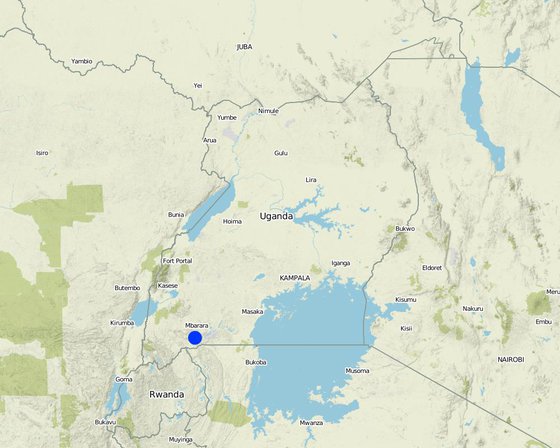
Location: Mbarara District (Rubagano, Mwizi), Uganda, Uganda
No. of Technology sites analysed:
Spread of the Technology:
In a permanently protected area?:
Date of implementation: less than 10 years ago (recently)
Type of introduction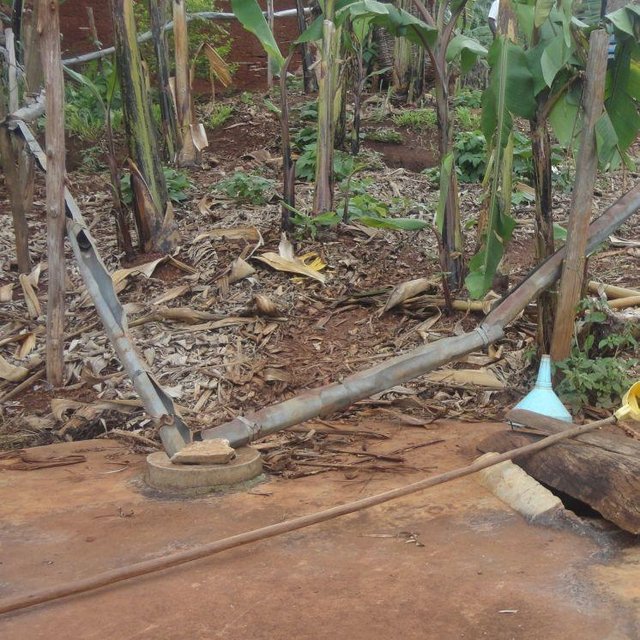

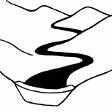


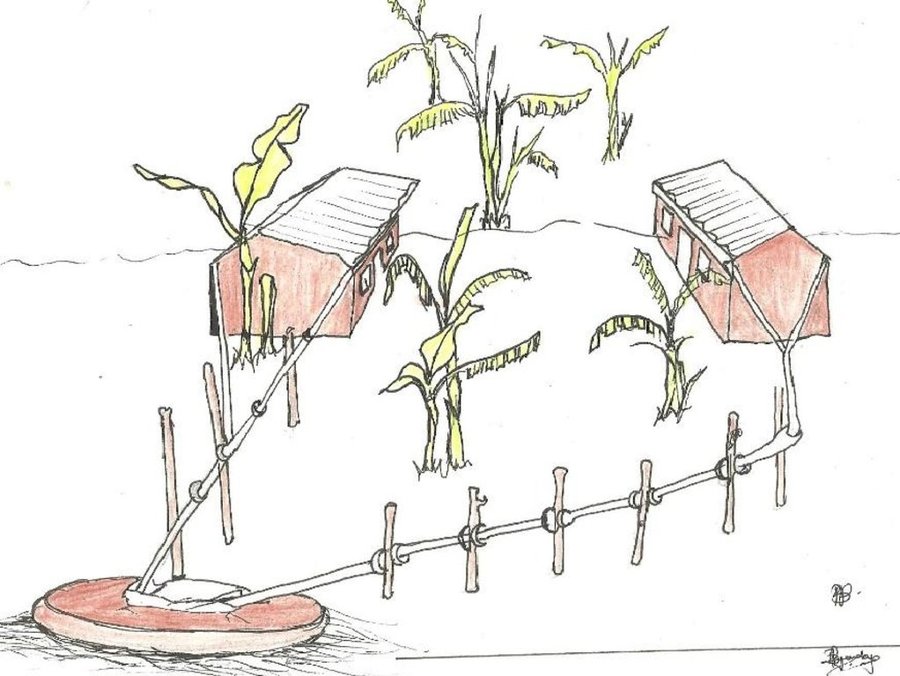
| Specify input | Unit | Quantity | Costs per Unit (UGX) | Total costs per input (UGX) | % of costs borne by land users |
| Labour | |||||
| Labour | ha | 1.0 | 500.0 | 500.0 | 100.0 |
| Equipment | |||||
| Tools | ha | 1.0 | 30.0 | 30.0 | 100.0 |
| Construction material | |||||
| Wood | ha | 1.0 | 16.0 | 16.0 | 100.0 |
| Bricks | ha | 1.0 | 400.0 | 400.0 | 100.0 |
| Cement | ha | 1.0 | 420.0 | 420.0 | 100.0 |
| Sand | ha | 1.0 | 160.0 | 160.0 | 100.0 |
| Total costs for establishment of the Technology | 1'526.0 | ||||
| Total costs for establishment of the Technology in USD | 0.61 | ||||
| Specify input | Unit | Quantity | Costs per Unit (UGX) | Total costs per input (UGX) | % of costs borne by land users |
| Labour | |||||
| Labour | ha | 1.0 | 80.0 | 80.0 | 100.0 |
| Equipment | |||||
| Tools | ha | 1.0 | 10.0 | 10.0 | 100.0 |
| Construction material | |||||
| Wood | ha | 1.0 | 4.0 | 4.0 | 100.0 |
| Bricks | ha | 1.0 | 40.0 | 40.0 | 100.0 |
| Cement | ha | 1.0 | 42.0 | 42.0 | 100.0 |
| Sand | ha | 1.0 | 40.0 | 40.0 | 100.0 |
| Total costs for maintenance of the Technology | 216.0 | ||||
| Total costs for maintenance of the Technology in USD | 0.09 | ||||
Women and children
Women and children no longer have to walk long distances in search of water.
E.g. Roads